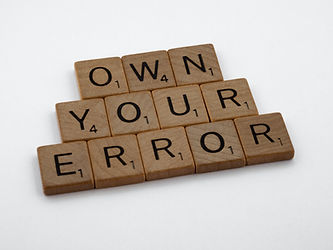Why is air travel considered one of the safest activities you can engage in?
Because pilots don’t have their own way of operating. Before every flight, even commercial pilots with 20 years of experience, rely heavily on checklists. They perform pre-flight tests of the same items in the exact same sequence every time. It’s their standard work.
Why is air travel considered one of the safest activities you can engage in?
Because pilots don’t have their own way of operating. Before every flight, even commercial pilots with 20 years of experience, rely heavily on checklists. They perform pre-flight tests of the same items in the exact same sequence every time. It’s their standard work.

Create Value, Eliminate Waste
Maximize value to customers by eliminating process waste and enhancing business performance.

Are you looking for ways to increase revenue, market share, and profit?
If so, then is your department or work team clear about:
-
What do customers value?
-
What does waste look like and how to eliminate it?
-
Difference between value-adding and non-value-adding activities?
Organizations can improve performance by adopting a relentless focus on eliminating waste, which is a powerful tool in performance improvement, creating a better workplace for employees and increasing value for customers.
Maximizing value to customers through the relentless elimination of waste is one of the most fundamental ways to improve an organization’s performance and create a work environment that allows every team member to excel.
How We Can Help
We assist the organization and business units in improving their value streams and business processes by facilitating workshops and coaching to:
-
Identify what customers define as value
-
Identify and eliminate the eight wastes and two conditions that create waste
-
Implement best practices to incorporate continuous improvement in their organizational DNA
The critical starting point for lean thinking is value, which is expressed in terms of a specific product that meets the customer's needs at a particular price and time.
Most customers define value based on four product attributes Emotional, Safety, Functionality, Price

Emotional
How does the product make you feel?

Safety
Can you use the product without being harmed physically or emotionally?
Functionality
Does it have the product features
you’re looking for?

Price
How much are you willing to pay for the value you want?

Once the team becomes clear about what the customers value, we work with them to identify and eliminate all activities that don’t add value and add cost or delays into getting the work done. The key to remember is that "Customer specifies value, Producer creates value."
The Eight Wastes
The eight wastes provide a disciplined and structured way to identify activities that affect performance. These non-value-adding activities become targets for elimination during improvement activities. Eliminating waste creates an environment where work flows more easily and can be completed more safely, and costs are kept in check.
OVERPRODUCTION, which results from:
-
Producing more product or process output than is required by the customer or by the next step in the process
-
Producing product or process output sooner than it’s needed


OVER-PROCESSING, which results from doing more than is necessary to produce work output, such as:
-
Entering the same data into two different systems
-
Getting multiple approvals
-
Adding features customers don’t value
-
Verifying the work of others
WAITING, which includes:
-
People waiting for equipment, work, or other people
-
Equipment or work sitting idle waiting for people


ERRORS, which cause defects, and defects cause the need for rework. Errors require additional time, money, and/or resources to fix.
INVENTORY waste, which includes the accumulation of supplies, raw material, and finished product that hasn’t been delivered to a customer.


MOTION waste occurs when people performing the work have to walk, reach or stoop more than is necessary due to poor layout, ergonomics, or process design.
TRANSPORTATION waste is the unnecessary movement of a physical product, equipment, paperwork, supplies, and even electronic information from one place to another.


LOST CREATIVITY, or under-utilized talent, is present when an organization fails to draw on the knowledge, full skill set, and potential of each team member.
The Two Conditions That Create Waste
Unevenness
Unevenness in work volume or the time it takes to complete work is a performance-harming condition that creates wastes of overproduction, over-processing, waiting, and inventory.
It can be generated externally and internally due to seasonality, delays in obtaining raw materials, sales incentives, equipment downtime, batching, lack of standard work, inconsistent staffing, system downtime.

Unevenness, whether caused by truly unpredictable customer demand and environmental factors or by internal decisions and work design that can be controlled results in promoting waste and should be eliminated.

Overburden
Overburdening people or equipment to do more than what they can or should do is a performance harming condition that results in:
-
Employee related issues such as low morale, high absenteeism, turnover, workplace accident
-
Impacting customers in the form of delivery delays, increased errors, poor customer service delivered by people who are burned out.
Doing more with less, accepting rush orders on a regular basis, improper scheduling, pushing equipment beyond its limits, and dealing with recurring process problems all lead to chronic overburdening.
Overburdening can be systematic across an entire organization, or it may be isolated to a specific value stream or process. In either case, it should be identified and eliminated.
Once you identify the waste, then take the actions to redesign your process to reduce or eliminate waste.
There are three goals to keep in mind when designing and improving work.
-
Make it easy and safe to do the work
-
Ensure the person doing the work can deliver high-quality output at each step
-
Enable flow through the removal of waste
You can identify waste in your organization by observing the work, talking with the people who do the work, drawing value stream or process maps, and videotaping the work.
